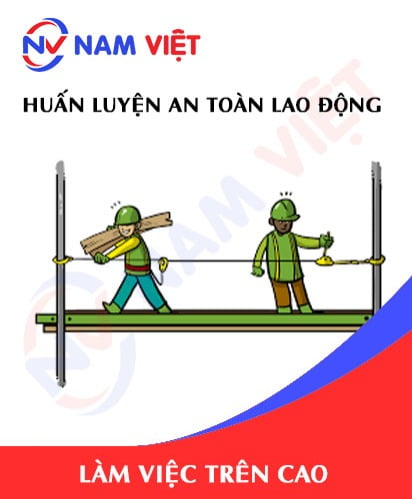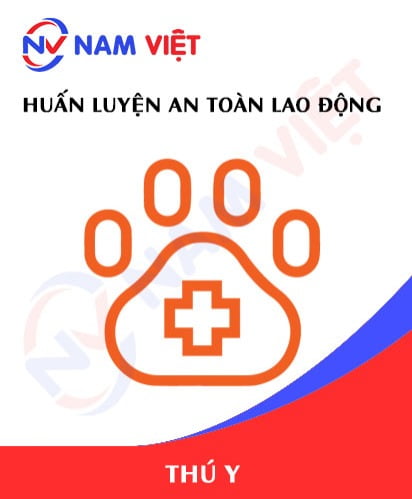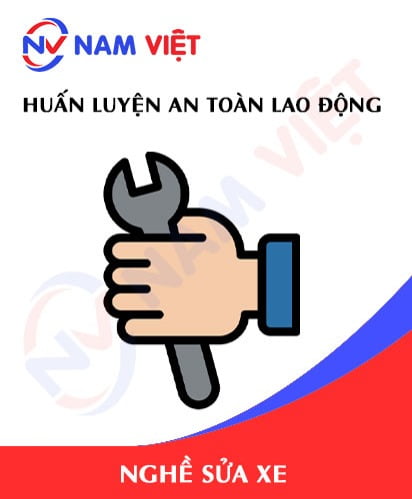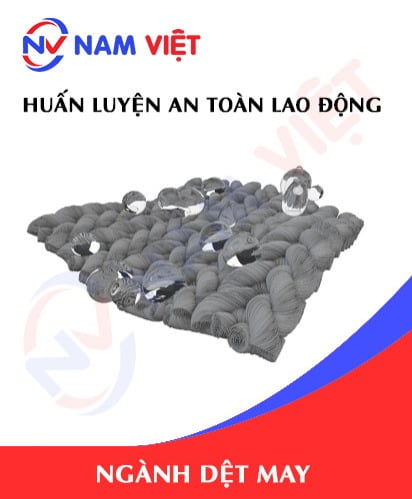Occupational Safety Training for Working at Heights
99,000 ₫
Note: The above price is calculated per person and may vary depending on the number of participants in the course and market fluctuations. For more accurate pricing support, please refer to the price list or contact our consulting staff directly.
Occupational safety is an important issue in high-altitude work and needs to be addressed promptly to ensure the health and safety of workers and enhance the reputation of businesses. The Occupational Safety Training course is one of the effective solutions to raise awareness of accident prevention for workers performing high-altitude tasks.
Table of Contents
Toggle1. Overview
a. What is working at heights?
- Working at heights is a job or activity that takes place above ground level, usually from 2 meters or higher. Jobs at heights include shipbuilding, construction, building installation, maintenance of industrial equipment, installation of electrical systems and pipelines, etc.
- Work at heights can take place in various locations such as on buildings, bridges, oil rigs, electrical towers, and other construction sites. Working at heights can provide high income but also carries high risks and requires proper knowledge, skills, experience, and safety equipment to ensure the safety of workers.

b. Common jobs performed at heights
Common jobs performed at heights include:
- Installing and repairing electrical systems, water pipelines, ventilation, and air conditioning systems on high-rise buildings.
- Maintaining and repairing bridges, highways, railways, and oil and gas pipelines.
- Performing construction work such as installing machinery at heights, installing retaining walls, and safety mesh to protect employees working above ground.
- Performing jobs in oil and gas extraction and manufacturing, as well as power lines.

c. Equipment supporting work at heights
Equipment supporting work at heights includes:
- Personnel lifts: used to move people and materials to higher levels. Personnel lifts are specially designed to ensure user safety.
- Tower cranes: used to lift materials to high places or transport materials from one location to another. Tower cranes are often used in large construction projects.
- Cranes on trucks: used to lift and move heavy materials. Truck-mounted cranes have a crane arm on top to perform lifting operations.
- Ladders and ropes: used to access high locations. Ladders and ropes are commonly used for maintenance, repair, or construction work.
- Elevated work platforms: used to lift workers to heights for maintenance, repair, or installation tasks.
- Scaffolding: a steel framework used to create a foundation for constructing high-rise buildings, bridges, civil works, shipbuilding, or other industrial works. Scaffolding consists of components such as base plates, braces, water pipes, hinges, column locks, and bolts, with heights typically 2 meters or higher. These components are connected to form a stable and secure structure.

2. Overview of occupational safety training for working at heights
a. What is Group 3 occupational safety training?
- Group 3 occupational safety training consists of sessions that equip workers with awareness on preventing workplace accidents. Workers directly performing work at heights are classified in Group 3.
- The training course helps workers identify and prevent hazards, reducing the risk of accidents while working at heights.
REGISTER FOR OCCUPATIONAL SAFETY TRAINING SERVICE
b. Training duration
Initial occupational safety training
- Total training duration is at least 24 hours, including assessment time.
- 8 hours of theory on occupational safety policies and regulations
- 8 hours of theory on basic occupational safety knowledge
- 4 hours of theory on specialized training content
- 2 hours of practical exercises on specialized content
- 2 hours for the final theory assessment
The training center will schedule multiple sessions depending on employee availability. Typically, there are 6 sessions over 3 days, provided the manufacturing company arranges continuous training time.
Periodic occupational safety training
- Before the occupational safety card expires, employees must undergo periodic occupational safety training if they want to renew it, with a training duration at least 50% of the initial training duration.
Explanation: total periodic occupational safety training lasts at least 12 hours, including assessment time. After completing the course and passing the test, employees will be issued or renewed their occupational safety card.
c. Training content
| No. | TRAINING CONTENT | TRAINING DURATION (HOURS) | |||
| Total | Including | ||||
| Theory | Practice | Assessment | |||
| I | Occupational safety policies and regulations | 8 | 8 | 0 | 0 |
| 1 | Overview of the legal framework on occupational safety. | 6 | 6 | ||
| 2 | System of occupational safety standards and technical regulations. | 1 | 1 | ||
| 3 | Specific regulations from state management agencies regarding new construction, expansion, or renovation of factories, facilities, machinery, and materials with strict occupational safety requirements. | 1 | 1 | ||
| II | Basic knowledge of occupational safety | 8 | 8 | 0 | 0 |
| 1 | Basic knowledge of hazards and harmful factors at the workplace. | 4 | 4 | ||
| 2 | Methods to improve working conditions. | 1 | 1 | ||
| 3 | Safety culture in manufacturing and business. | 1 | 1 | ||
| 4 | Rights and responsibilities of employers and employees; occupational safety policies; functions and duties of safety network officers. | 1 | 1 | ||
| 5 | Occupational safety rules, signage, instructions, use of safety equipment and personal protective gear; first aid and occupational disease prevention skills. | 1 | 1 | ||
| III | Specialized training content | 6 | 4 | 2 | 0 |
| Comprehensive knowledge of machinery, equipment, and hazardous substances; analyzing, evaluating, and managing occupational safety risks; safe work procedures with machinery, equipment, and materials with strict safety requirements. | 6 | 4 | 2 | ||
| IV | Final assessment of occupational safety training | 2 | 2 | 0 | 0 |
| Total | 24 | 22 | 2 | ||
See more training content of the 6 groups
d. Occupational safety card
After completing the occupational safety training and passing the test, employees will be issued a Group 3 occupational safety card (commonly called Group 3 safety certificate).
The Group 3 card includes details such as full name, date of birth, specific job and work environment, training duration, red stamp, and signature confirming course completion.
According to Clause 2 of Article 24 of Decree 44/2016/ND-CP, there are two cases:
- If the employer and employee have a labor contract, the employer must sign, stamp, and seal the occupational safety card for the Group 3 trainee after completing the course at the occupational safety training unit and passing the test.
- If the employee is freelance or temporary without a labor contract, the training unit must sign, stamp, and seal the occupational safety card after the employee completes the course and passes the test.

3. Recognizing hazards when working at heights
Hazards when working at heights may include:
- Workers must ensure they use proper protective equipment such as shoes, safety harnesses, safety frames, and protective vests to minimize the risk of falling.
- Workers may collide with obstacles or other objects, which can cause serious injury or life-threatening accidents. Workers should be trained to detect and avoid obstacles during work at heights.
- Work at heights often involves exposure to electrical wires or equipment. Non-compliance with electrical safety regulations can result in electric shock, injury, or death.
- If work is performed in environments with smoke, dust, or toxic substances, workers may be exposed to harmful chemicals, leading to serious health issues.
- Some jobs at heights are performed in confined spaces, such as pipes or restricted areas. Working in confined spaces without proper safety measures can pose serious health and life risks.
- Working at heights may require moving on slippery surfaces or difficult terrain. Slips and falls can occur at any time, endangering workers’ lives.
4. Common occupational accidents when working at heights
Common accidents when working at heights include:
- Falling from heights: the most dangerous accident, which can cause severe injury or death.
- Losing balance: workers may lose balance on narrow platforms, perform overreaching movements, or be affected by strong winds.
- Electric shock: working near high-voltage lines or electrical equipment can cause electric shock.
- Toxic gas poisoning: workers may inhale toxic gases from chemicals, solutions, or machinery emissions.
- Falling objects: construction, maintenance, and repair work often involves transporting materials and tools. Dropped objects can cause serious injury to workers below.
5. Safety Measures for Working at Heights
Safety measures for working at heights include:
- Equipment such as cranes, lifts, hoisting devices, etc., must be designed and manufactured to ensure safety, meet standards, and be periodically inspected to guarantee safe use. When in use, they must be properly supported, blocked, and secured to prevent slipping, falling, or tipping.
- Employees working at heights must be trained and instructed in skills and safety. Workers should be guided on how to use safety equipment and trained to respond to emergency situations.
- Those working at heights must be fully equipped with personal protective equipment such as helmets, anti-puncture shoes, safety harnesses, etc.
- Working-at-height equipment must be regularly inspected and maintained to ensure they are always functioning well and safe to use.
- Workers at heights must follow safety procedures, including checking equipment before use to ensure the safety of themselves and their colleagues.
- Employees should not work at heights in adverse weather conditions, as it poses a high risk of accidents.
- Workers at heights must always remain alert to emergency situations and know how to respond, including using safety equipment to minimize occupational hazards.
- Employees working at heights must fully comply with labor safety regulations.
- Periodically conduct occupational environment monitoring in factories, collect and analyze harmful factors for workers, and adjust to reduce hazards to prevent occupational diseases.

6. Benefits of Occupational Safety Training for Working at Heights
An Toan Nam Viet provides your enterprise with the following benefits after completing occupational safety training courses in accordance with Decree 44/2016/NĐ – CP on Occupational Safety and Hygiene for companies and enterprises:
- Workers can identify potential occupational hazards and take preventive measures to avoid accidents.
- Your enterprise can establish risk prevention measures in production, operation, and maintenance processes.
- Reduce costs related to potential workplace hazards.
- Continuous production without interruptions increases labor productivity and product quality.
- Ensure compliance with labor safety laws and avoid legal risks.
- Create credibility and professionalism in all aspects, thereby enhancing your enterprise’s brand.
Nam Viet’s training courses are a solution to prevent and protect individuals from external hazards that may cause injuries or, in severe cases, death.
REGISTER FOR OCCUPATIONAL SAFETY TRAINING SERVICE
7. Customer Feedback after Completing Working-at-Heights Safety Training
An Toan Nam Viet has years of experience accompanying many enterprises in Vietnam, especially in the southern provinces. This responsibility is highly valued, which is why our occupational safety training has been continuously professionalized. Our growth is driven by both positive feedback and constructive input from enterprises. Below are testimonials from partners we have served.
See more customer interviews after using the service of An Toan Nam Viet
8. Occupational Safety Training Capacity of An Toan Nam Viet
An Toan Nam Viet is a reputable and quality occupational safety training center in Vietnam, conducting continuous training sessions at factories, plants, and construction sites across all 63 provinces.
REGISTER FOR OCCUPATIONAL SAFETY TRAINING SERVICE
Occupational Safety Training License
- An Toan Nam Viet has been inspected and certified by the Department of Occupational Safety of the Ministry of Labor – Invalids and Social Affairs, confirming our eligibility for occupational safety training. This reinforces our occupational safety training capacity.

Training Materials and Lectures
- Before being included in occupational safety training courses, materials are reviewed to ensure accuracy and practical effectiveness.
- Our instructors’ teaching methods follow An Toan Nam Viet standards, based on expert research and practice in occupational safety training to maximize knowledge absorption for trainees.
Facilities
- Controlling classroom factors affecting training improves teaching efficiency and learner knowledge retention.
- Our training facilities include spacious classrooms meeting standards for area, lighting, and equipment.
9. Nationwide Reputable Occupational Safety Training Center
At An Toan Nam Viet, we prioritize professional dedication in occupational safety training. Teaching workers how to protect themselves contributes to national development.
To ensure effective training, we meticulously prepare all tools, equipment, curriculum, documents, sound, and lighting.
Our instructors are experienced professionals with research on hazard identification across all industries and prevention methods.
Lectures are practical, engaging, and easy to understand, allowing workers to effectively absorb knowledge, always aligned with Decree 44/2016/NĐ-CP.
Workers learn preventive measures and self-protection techniques, applying them appropriately in real work situations.
Our training center proudly provides professional, reliable occupational safety training with the following advantages:
- Competitive training costs while maintaining quality.
- Flexible training schedules to suit enterprise production.
- Fast and compliant certification procedures.
- Instructors with many years of experience.
- Classrooms controlled to optimize training efficiency and knowledge retention.
- Lectures tailored to enterprise safety needs.
- An Toan Nam Viet works professionally and diligently to provide accurate and timely support to clients.

10. Additional References for Working-at-Heights Safety Training
- Working-at-Heights Safety Training Materials
- Complete Occupational Safety Training Materials
- Occupational Safety Training Tests
11. Working-at-Heights Safety Training Activities
- KY NGUYEN ENVIRONMENTAL ENGINEERING JOINT STOCK COMPANY
- VAN PHONG OIL BOND WAREHOUSE JOINT VENTURE LTD.
- HUNG KHANG NGHIA CO., LTD.
- INLAND WATERWAY MAINTENANCE MANAGEMENT JSC No. 15
- NONG LAM ENVIRONMENTAL TECHNOLOGY LTD.
- BUILD-UP VIETNAM LTD – BRANCH 2
- JAGUAR TRADING AND IMPORT-EXPORT SERVICE CO., LTD.
- DEO CA EXPRESSWAY MANAGEMENT AND EXPLOITATION JSC
- THIEN QUANG HUNG ONE-MEMBER LTD.
- GREEN DIAMOND JOINT STOCK COMPANY
- KHANG GIA TRADING AND MANUFACTURING LTD.
- HUNG THINH GENERAL CONSTRUCTION AND IMPORT-EXPORT JSC
- MINH HAI GARMENT EXPORT LTD.
- NGAN LONG INVESTMENT AND DEVELOPMENT JSC
- ACC – 244 JOINT STOCK COMPANY
- NUMBER 39 JOINT STOCK COMPANY
- HUNG THINH GENERAL CONSTRUCTION AND IMPORT-EXPORT JSC
- HANOI CONSTRUCTION AND ENVIRONMENT JSC
- 749 CONSTRUCTION JSC
- LANMAK REAL ESTATE CONSTRUCTION INVESTMENT JSC
- HOANG NGOC QUY LTD.
- HERCULES LTD. (VIETNAM)
- HOGETSU VIETNAM LTD.
- CICOR VIETNAM LTD. (JULY 2025)
- THIEN DUC CONSTRUCTION LTD.
- TIEN PHONG CONSTRUCTION AND INSTALLATION JSC
- LONG HAI TELECOMMUNICATION LTD.
- LIEN KHUONG BRANCH – PETROLIMEX AVIATION FUEL JSC
- TRAN VU SHANGHAI CONSTRUCTION ARCHITECTURE LTD. (VIETNAM)
- HUA CHANG VINA SCIENCE AND TECHNOLOGY LTD.
- P. DUSSMANN VIETNAM LTD. (AUGUST 2025)
- MUSEM VINA LTD.
- HOTOSU LTD. (AUGUST 2025)
- LEE & CAROL PHU THO ONE-MEMBER LTD.
- PHU MY CONSTRUCTION, TRADING AND ADVERTISING SERVICE LTD. (SEPTEMBER 2025)
1 review for Occupational Safety Training for Working at Heights
No comments yet















caotiensyhung.07081999
Dịch vụ huấn luyện an toàn lao động rất tốt nhé, giảng viên dạy rất sinh động dễ hiểu!